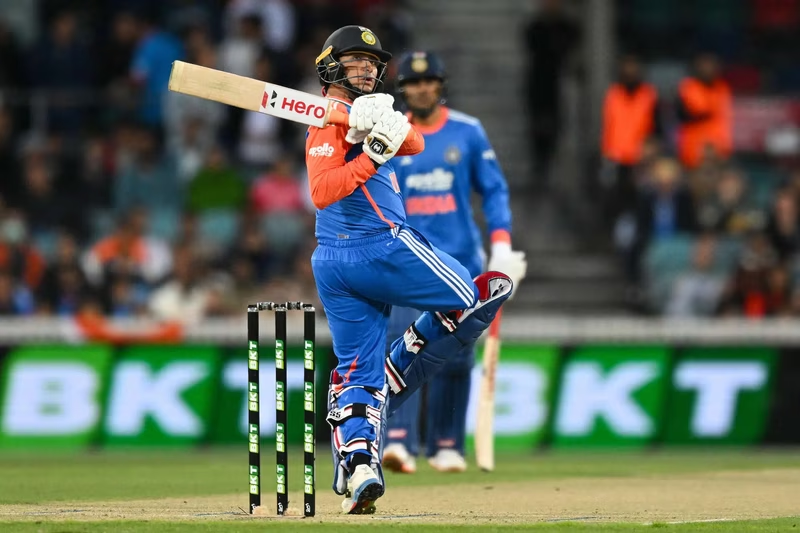Table of Contents
- Batting Collapse Sparks Fury
- Irfan Pathan’s Scathing Verdict
- Abhishek Sharma: A Lone Bright Spot
- Powerplay Problems and Strategic Gaps
- Australia Dominates Series Opener
- What Next for Team India?
- Sources
India’s Batting Collapse Sparks Fury
In a performance that left fans stunned and experts fuming, Team India suffered a dramatic batting collapse against Australia in the second T20I, getting bowled out for just 125 runs. The meltdown on home soil wasn’t just a loss—it was, in the words of former all-rounder Irfan Pathan, “not a match, but a mismatch.”
The India batting unit, expected to fire on familiar pitches, instead crumbled under disciplined Australian bowling. Only one batter crossed 30, highlighting a concerning lack of resilience and strategy at the top of the order.
Irfan Pathan’s Scathing Verdict
Irfan Pathan, known for his candid analysis, didn’t mince words in his post-match critique. Calling the contest a “mismatch,” he pointed to systemic issues beyond just poor shot selection. “This wasn’t competitive cricket,” Pathan remarked during a live broadcast. “When your total is 125 on a decent pitch, you’re not giving your bowlers a chance.”
His comments resonated with a growing chorus of concern among fans and pundits alike, who question whether the current batting approach aligns with modern T20 demands—especially in high-stakes bilateral series.
Abhishek Sharma: A Lone Bright Spot
Amid the wreckage, 24-year-old Abhishek Sharma stood tall with a gritty 68 off 56 balls. His innings included seven boundaries and two sixes, showcasing composure absent from his teammates. Pathan specifically praised Abhishek’s intent and technique, calling him “the only one who looked like he belonged.”
Despite his efforts, the lack of support from the rest of the lineup meant his knock was in vain. The next highest score was just 17—a stark indicator of how isolated Abhishek was at the crease.
Powerplay Problems and Strategic Gaps
Pathan also highlighted a recurring flaw: India’s ineffective powerplay strategy. “We keep losing wickets in the first six overs without building a base,” he noted. “You can’t rely on middle-order fireworks if the top order keeps gifting wickets.”
Data from the match supports his claim—India lost three wickets in the powerplay for just 32 runs, derailing any momentum before it could build. In contrast, Australia’s openers calmly negotiated the new ball and chased down the target in just 15.4 overs without breaking a sweat.
Australia Dominates Series Opener
Chasing 126, Australia never looked in trouble. Openers Travis Head and Josh Inglis put on a 90-run partnership, dismantling India’s bowling attack with clinical precision. The visitors wrapped up the win with 26 balls to spare, taking a commanding 1-0 lead in the three-match series.
The ease of their victory underscored the gulf in execution between the two sides on the night—and lent weight to Pathan’s “mismatch” label.
What Next for Team India?
With the third and final T20I scheduled for Sunday, Team India faces urgent questions. Can they regroup? Will selectors rethink the batting order or bring in more aggressive openers? And most importantly, can they translate individual talent into collective performance?
As Pathan implied, talent alone isn’t enough. Without smarter strategies—especially during the critical powerplay phase—the India batting unit risks repeating this collapse in future encounters.
